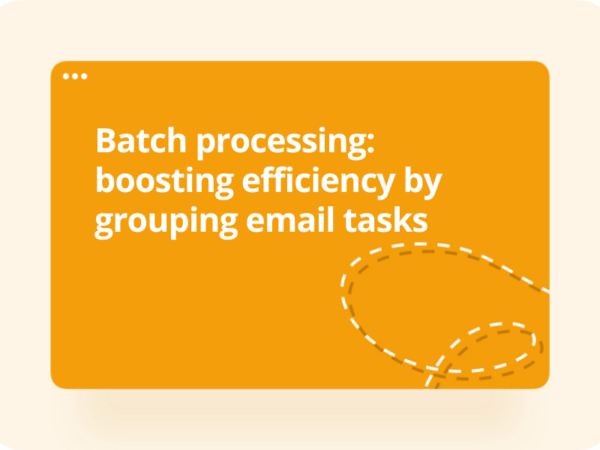Email is a cornerstone of workplace communication. And it’s easy to see why: it’s a quick and easy way to communicate with clients and colleagues, helping everyone stay connected at all times.
Plus, emails provide a handy written record of conversations, so if confusion arises, you can always go back and see what was discussed.
But while email has been a common form of workplace communication for more than half a century, it’s definitely seen its share of changes along the way.
This guide will examine these changes as we explore the evolution of email culture in the workplace over the past five decades.
Changes in email culture over the decades
Over the following decades, email culture changed significantly, influenced by new technologies and work styles:
Evolution in email etiquette
Email etiquette changed as people grew more comfortable with digital communication. Long signatures and formal greetings have been replaced by shorter, more direct messages.
Impact of mobile technology and remote work
The rise of laptops, tablets, and smartphones means email is now available 24/7, blurring the lines between work and personal time. This accessibility has played a major role in the growth of remote work, as teams can communicate and collaborate from anywhere.
Integration with other communication tools
Email systems began to work alongside instant messaging and video conferencing tools, making electronic communication seamless. This setup has continued to allow teams to exchange information quickly, facilitating more interactive, collaborative discussions.
Industry-specific email trends
Email usage varies significantly across different industries:
- Tech: The tech industry often pioneers new email technologies and practices, emphasizing efficiency and innovation in communication.
- Healthcare: Email in healthcare focuses heavily on compliance with regulations like HIPAA, prioritizing patient privacy and secure communication.
- Finance: The finance sector relies on email services for secure communication and compliance with strict financial regulations, emphasizing encryption and audit trails.
- Education: In education, email is a primary means of communication among students, faculty, and administrators, facilitating administrative tasks and academic collaboration.
Current trends in email usage
Our exploration of the email timeline now brings us to the modern-day workplace. The most recent trends in email communications include:
Rise of email management tools and automation (e.g., InboxFreedom)
Email management tools and automation solutions like InboxFreedom are gaining popularity, aiming to streamline inbox organization and boost efficiency.
These tools can:
- Filter and prioritize incoming messages.
- Automatically categorize emails by sender, subject, or content.
- Schedule emails to be sent at specific times.
- Integrate with task management for smoother workflows.
- Set reminders and receive notifications for important emails.
- Search and archive for secure storage and easy access to past emails.
- Customize settings for personal email management.
- Analyze email usage patterns with insights.
- Ensure security with encryption features.
- Work seamlessly across multiple email platforms.
Increasing focus on productivity and reducing email overload
While email is still more efficient than other communication methods, too many emails can bog down productivity. That’s why, now more than ever, there’s a push towards productivity strategies that help manage email overload. This involves using smarter email management practices like time management techniques, and automation solutions.
Companies and individuals are now setting clear communication guidelines and using email filters to prioritize important messages. These efforts aim to streamline workflows and improve overall efficiency.
Trends in email security and privacy concerns
As email security remains a critical concern, current trends focus on enhancing security measures against phishing, malware, and data breaches.
Privacy is also a priority, and many email platforms and providers are focusing on encryption and compliance with data protection regulations like GDPR and CCPA.
Closing thoughts
Born over 50 years ago, email has grown into a vital tool for workplace communication, offering swift connections and reliable records. Despite initial hurdles, technological advancements have boosted email efficiency in the workplace.
As industries evolve, email management tools and heightened security measures continue to shape their role, guaranteeing their continued relevance in modern business operations.
Achieve AI-powered inbox zero with InboxFreedom
If you’re tired of email overload and seeking a solution that organizes your emails intelligently, InboxFreedom is the answer you’re looking for.
InboxFreedom is the ultimate email management tool, designed to streamline your inbox, prioritize tasks, and enhance productivity.
Join our waiting list today to get started and achieve AI-powered inbox zero for just $5 per month!
Sign Up For Our
AI-Powered Inbox Waitlist




